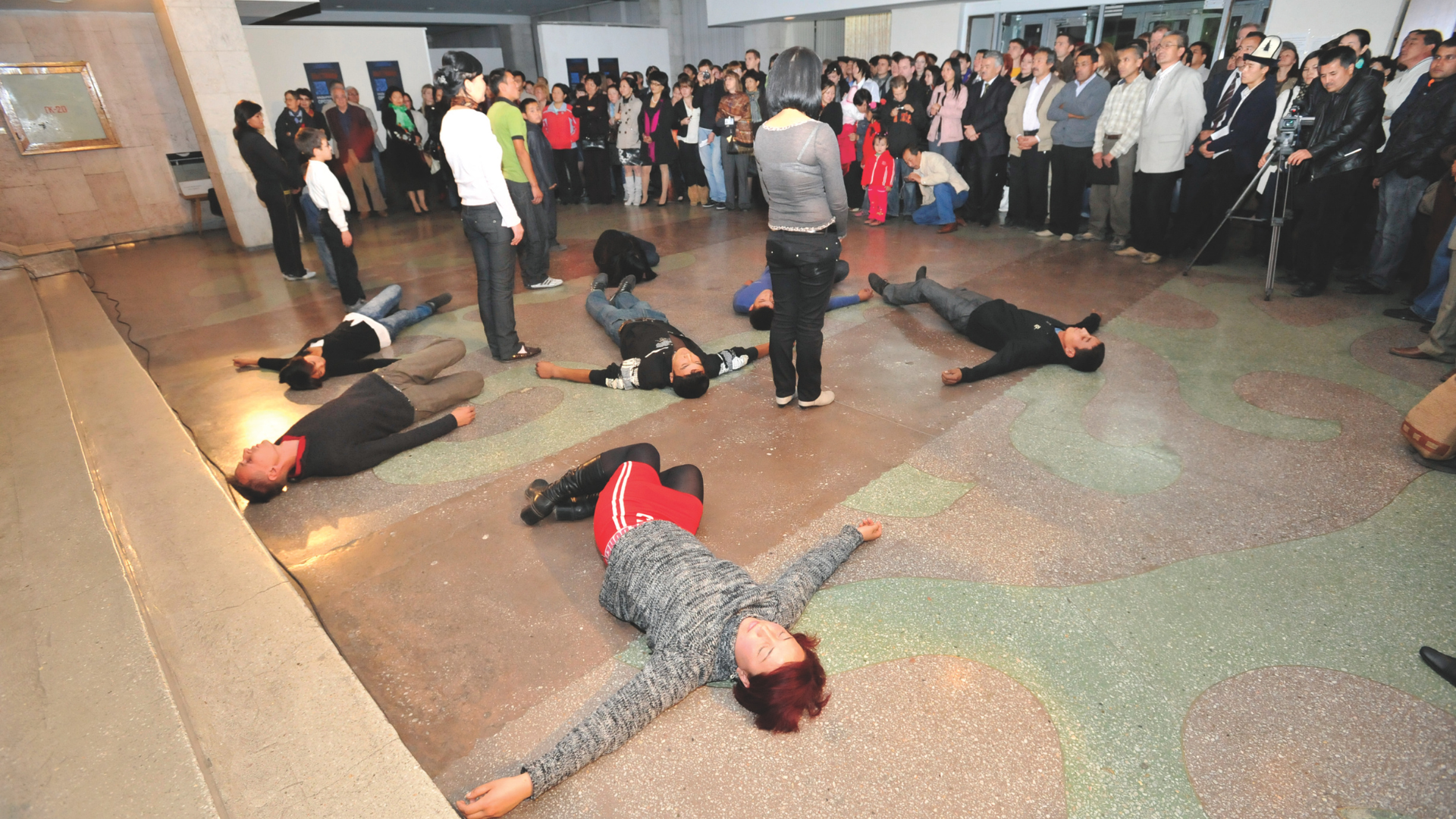Moving Nomad. First National Contemporary Art Exhibition (2009)
Exhibition: Kyrgyz National Museum of Fine Arts named after Gapar Aitiev, Bishkek.
Curator: Sharbek Amankul, co-curator: Gamal Bokonbaev
Artists: Batyr Djaliev, Mamat Kamchybekov, Avas Momunkulov, Altynbek Torogeldiev, Alexey Osokin, Termirbek Asanov, Alexander Vereshchagin, Baktybek Musaev, Farhad Ruziev, Rahat Itikeev, Almasbek Samidinov, Tamara Bostonkulova, Sergei Kasadaev, Abdusamat Myrzaev, Chingiz Aidarov, Janarbek Amankulov, Bermet Borubaeva, Talant Ogobaev, Anatoly Kolesnikov, Nikolai Cherkasov, Dmitry Petrovsky.
The first National Contemporary Art Exhibition in Kyrgyzstan, titled Moving Nomad, was a groundbreaking initiative aimed at bringing attention to the country's regions' pressing social and cultural issues through the lens of contemporary art. The exhibition sought to stimulate creative cooperation and communication between artists from various cities in Kyrgyzstan, encouraging exchanging ideas, experiences, and artistic practices. It provided a platform for artists from different regions to unite, fostering artistic collaboration and a broader public discussion on Kyrgyzstan's pervasive social, cultural, and political challenges. Focused on five central themes—family, identity, migration, urbanization, and politics—the exhibition explored these complex issues through various contemporary art forms, from visual art to performance and installation. Each theme provided an entry point for examining the multifaceted nature of life in Kyrgyzstan, especially in the country’s evolving political landscape, its shifting social structures, and the rapid changes brought about by urbanization and migration.
The family theme delved into the shifting dynamics of family structures in the face of socio-economic changes. At the same time, identity examined the struggles of individuals and communities to maintain cultural identity amidst growing globalization and urban development. Migration focused on the movement of people within Kyrgyzstan, particularly from rural areas to urban centers, and the broader impact of migration on regional identity and community cohesion. The theme of urbanization explored the challenges and opportunities that arise as more people move into cities, reshaping the country’s landscape and social fabric. Finally, politics provided a critical lens on the intersection of art and power, addressing how contemporary art can challenge and reflect the political climate and the public’s relationship with authority. Moving Nomad was the first exhibition of its kind to have such extensive regional coverage in Kyrgyzstan, and it marked a significant milestone in the country’s contemporary art scene. By providing a space for artists from different regions of Kyrgyzstan to collaborate, the exhibition highlighted the diversity of creative expressions across the country. It stimulated a much-needed dialogue about the future of culture and the arts in Kyrgyzstan’s regions. It raised important questions about the role of art in addressing social and political challenges, the development of cultural infrastructure, and how art can be a tool for social change.
One of the key objectives of the exhibition was to create a platform for communication among artists, cultural professionals, and the broader public. By drawing attention to the issues faced by the regions, the exhibition aimed to create a network of artistic and cultural cooperation that could work toward addressing these challenges. It sought to empower regional artists from Osh, Jalalabad, Issyk Kul, and Bishkek by bringing their voices to a national stage, allowing them to contribute to the ongoing dialogue about the development of culture in Kyrgyzstan and the role of contemporary art in shaping the country's future. The exhibition not only served as a reflection of the current cultural climate in Kyrgyzstan but also provided a space for public engagement and debate on the future direction of the country’s artistic and cultural development. Through its focus on social and cultural issues, Moving Nomad played a crucial role in raising awareness about the region's challenges, shedding light on complex societal issues and driving efforts toward social change and greater cultural understanding.




